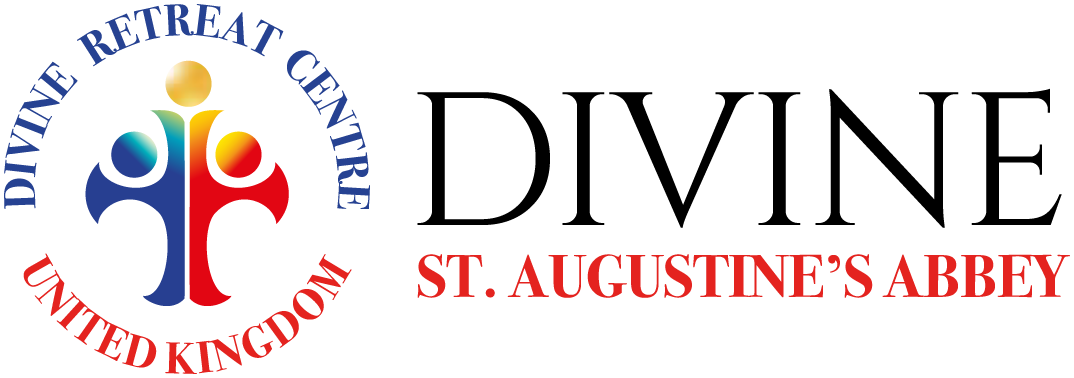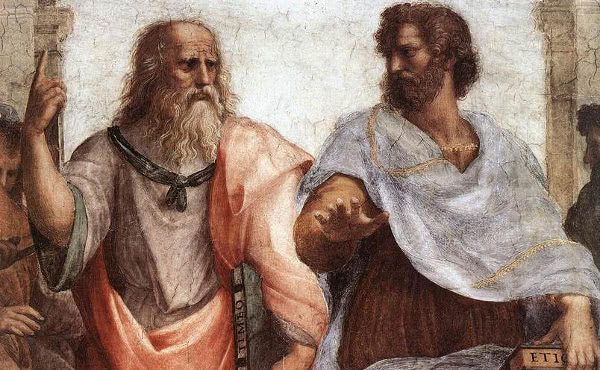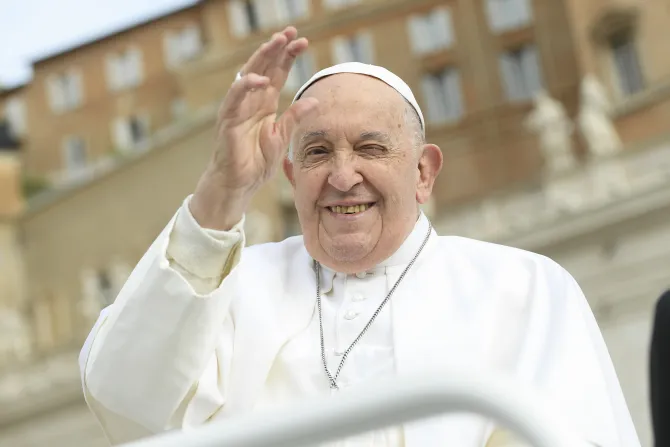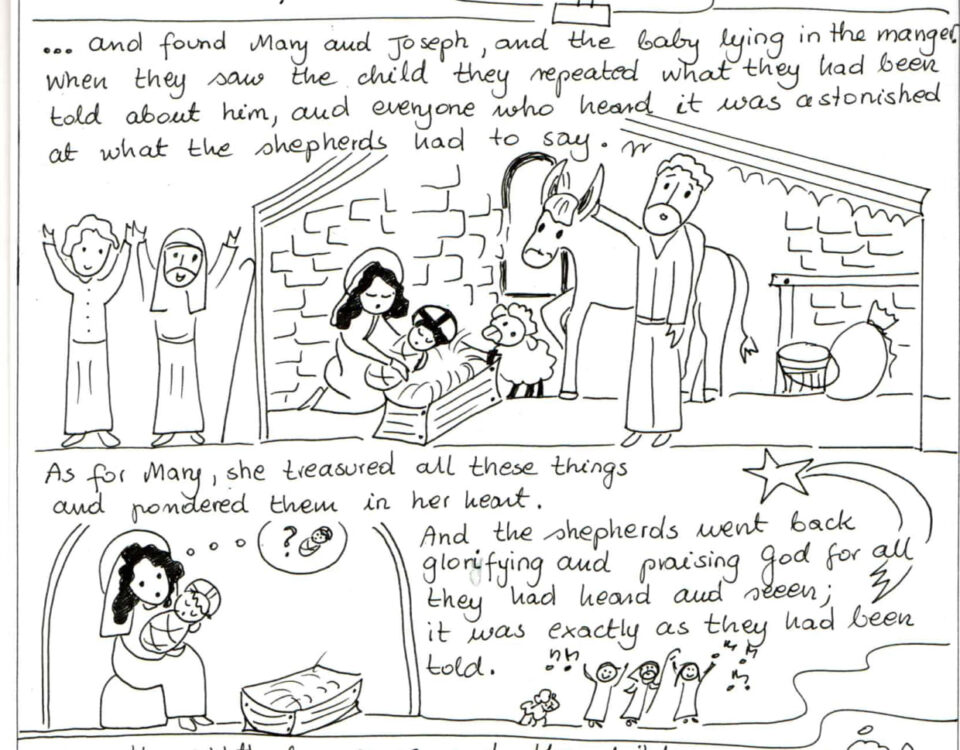Divine Retreat Centre UK – Official Website
The Power of Your Tears
September 27, 2022Shadows of the Holy Eucharist — Passover
September 27, 2022Crucifixion was one of the most scandalous and most shameful death sentences ever imposed upon any man—upon criminals, mostly—and yet, it was the same punishment borne by Jesus Christ to save the world. Seeing Jesus hanging upon the cross must have made us wonder why did God have to become a human being? Why did God have to suffer? Why did God have to die? All these questions have one answer—the Blood. Blood is necessary to atone for sin. “For the life of the flesh is in the blood; and I have given it to you for making atonement for your lives on the altar; for, as life, it is the blood that makes atonement” (Leviticus 17:11).
The wages of sin is death. It’s the kind of death wherein we lose the presence of God and His life-giving Spirit. We see this in Genesis 3, when man had first fallen into sin: (1) Adam and Eve ate the forbidden fruit (an attack on God’s sovereignty); (2) they hid themselves from the presence of the Lord God among the trees of the garden (shamefulness); (3) they didn’t tell God where they were (dishonesty); (4) they realized their nakedness (guilty conscience); (5) they accused each other rather than themselves for their own sin (pride). From one sin, it led them to commit a whole slew of other sins. All these signify the death of the spirit and an experience of the loss of peace, joy and life. That’s why, in order to restore life, blood (a symbol of life) had to be shed. This is the work of salvation that Jesus Christ accomplished on the cross and in the last supper.
Christ’s crucifixion and the last supper are taken as one sacrifice. Both events constitute the Blood of the Covenant. This covenant is being renewed daily in every altar in the “Holy Sacrifice of the Mass” or the “Holy Eucharist”. This act of daily renewal is in obedience to Jesus’ command: “Do this in remembrance of me” (Luke 22:19), which is only a reverberation of an older command set by God in the Old Testament: “You shall observe this rite as a perpetual ordinance for you and your children” (Exodus 12:24).
Everything that Jesus did was to fulfill the scriptures. “Do not think that I have come to abolish the law or the prophets; I have come not to abolish but to fulfill” (Matthew 5:17). “All this has taken place, so that the scriptures of the prophets may be fulfilled” (Matthew 26:56). “For I tell you, this scripture must be fulfilled in me…and indeed what is written about me is being fulfilled” (Luke 22:37). Everything that had been started in the Old Testament had been completed by Jesus Christ in the New Testament.
Therefore, to have a deeper understanding of the New (Blood) Covenant that Jesus had established, we go back to an event in the Old Testament which foreshadowed it. This event in the Old Testament was the blood of the covenant that God had made with Moses—the Old (Blood) Covenant. Let’s explore in what ways did the old one foreshadowed the new, so that we may participate in this Covenant Christ established for us and receive its great promise.
1. The old covenant was established alongside the creation of a hierarchy; the new covenant was established alongside the creation of the Church hierarchy-
In the Old Covenant, God instructed Moses to come close to the Lord, followed by 3 people, who were followed by the 70 elders of Israel, who were followed by the rest of the people of Israel. In Exodus 24:1-3, “Then he said to Moses, “Come up to the Lord, you and Aaron, Nadab, and Abihu, and seventy of the elders of Israel, and worship at a distance. Moses alone shall come near the Lord; but the others shall not come near, and the people shall not come up with him.” Moses came and told the people all the words of the Lord and all the ordinances; and all the people answered with one voice, and said, “All the words that the Lord has spoken we will do.” As one assembly before God, the people showed their reverence by following the structure and distance set by God between God and men. From the top of the hierarchy, the words of the Lord cascaded down to the people.
In the New Covenant, Jesus called the 12 Apostles. “These are the names of the twelve apostles: first, Simon, also known as Peter, and his brother Andrew; James son of Zebedee, and his brother John; Philip and Bartholomew; Thomas and Matthew the tax collector; James son of Alphaeus, and Thaddaeus” (Matthew 10:2-3). Among them, Peter was given the keys to the Kingdom of God, establishing his Primacy. Among the twelve also, Jesus chose three apostles—Peter, James, and John—as His closest confidantes. Later, Jesus appointed 70 others to share in the work of proclaiming the Gospel. “After this the Lord appointed seventy others and sent them on ahead of him in pairs to every town and place where he himself intended to go” (Luke 10:1). We see this hierarchy at work initially in the multiplication of the loaves. “[Jesus] taking the five loaves and the two fish, he looked up to heaven, and blessed and broke the loaves, and gave them to his disciples to set before the people” (Mark 6:41). [Jesus] took the seven loaves and the fish; and after giving thanks he broke them and gave them to the disciples, and the disciples gave them to the crowds” (Matthew 15:36). From the top of the hierarchy, Jesus distributed the bread to the people.
2. The old covenant was set up with an altar and the twelve pillars; the new covenant was set up with the presence of Jesus Christ and the twelve apostles-
In the Old Covenant, Moses built an “altar at the foot of the mountain,” which represented the presence of God. He also set up around the altar the twelve pillars that stood for the twelve tribes of Israel. In Exodus 24:4, “And Moses wrote down all the words of the Lord. He rose early in the morning, and built an altar at the foot of the mountain, and set up twelve pillars, corresponding to the twelve tribes of Israel”.
In the New Covenant, Jesus, during His Last Supper, was at the table representing the altar. He was surrounded by His twelve apostles, which represented the new twelve tribes of Israel. In Luke 22:14, “When the hour came, he took his place at the table, and the apostles with him.” The apostles are also the pillars of the Church. “James and Cephas and John, were acknowledged pillars” (Galatians 2:9).
3. The old covenant involved offering a sacrifice; the new covenant involved offering a sacrifice-
In the Old Covenant, Moses “offered burnt offerings and sacrificed oxen as offerings of well-being to the Lord. Moses took half of the blood and put it in basins, and half of the blood he dashed against the altar” (Exodus 24:5-6). Moses acted alone in pouring the first half of the blood upon the altar. The sprinkling of the blood upon altar, which represented the presence of God, means God is also actively participating in the covenant. It means God was in agreement with the terms of the covenant which He himself initiated with the people of Israel through Moses.
In the New Covenant, Jesus acted alone in the sacrifice of His blood upon the supper table. “While they were eating, Jesus took a loaf of bread, and after blessing it he broke it, gave it to the disciples, and said, “Take, eat; this is my body.” Then he took a cup, and after giving thanks he gave it to them, saying, “Drink from it, all of you; for this is my blood of the covenant, which is poured out for many for the forgiveness of sins” (Matthew 26:26-28). Jesus offered the bread (His Body) and the wine (His Blood) separately. By separating the body and blood, Jesus was actually offering a sacrifice. He was celebrating His death. The death He celebrated in the Last Supper was completed on His crucifixion in Mt Calvary. On Mt Calvary, Jesus was covered in His blood (He is the altar sprinkled with blood).
4. The old covenant involved the people’s agreement to enter into a relationship with God; the new covenant involved the people’s agreement to enter into a relationship with God-
In the Old Covenant, Moses read the law to the people and dashed the other half of the blood upon them. In Exodus 24:7-8, “Then he took the book of the covenant, and read it in the hearing of the people; and they said, “All that the Lord has spoken we will do, and we will be obedient.” Moses took the blood and dashed it on the people, and said, “See the blood of the covenant that the Lord has made with you in accordance with all these words.”” In the sprinkling of the blood on the altar and the people, both parties have entered into a blood relationship. It’s a sacred family bond between God as the husband/bridegroom and the people of Israel as the wife/bride.
In the New Covenant, the twelve apostles partook of the bread and the cup of wine that Jesus offered. Within them, the blood of Christ had been sprinkled. In the Holy Eucharist (new covenant), we also receive the body and blood of Christ within us in the form of bread and wine. “The cup of blessing that we bless, is it not a sharing in the blood of Christ? The bread that we break, is it not a sharing in the body of Christ?” (1 Corinthians 10:16). It represents our agreement to the covenant and our ‘Amen’ to the words of the priest, who acts in the person of Christ. In the New Covenant, we also enter into a blood relationship with God—a sacred family bond with God as our husband/bridegroom and we, the Church, as His wife/bride. St. Paul wrote, “For the husband is the head of the wife just as Christ is the head of the church, the body of which he is the Savior” (Ephesians 5:23). This means, we are not only called to have a “personal relationship with Jesus”. We enter into a marriage, wherein we share one body (experience oneness or communion) with Christ.
5. The old covenant is completed with a meal; the new covenant is completed with a meal-
In the Old Covenant, after Moses had finished the sacrifice, it is followed by the second part of the covenant—the meal. The meal did not take place on earth but in some kind of heavenly experience. In Exodus 24:9-11, “Then Moses and Aaron, Nadab, and Abihu, and seventy of the elders of Israel went up, and they saw the God of Israel. Under his feet there was something like a pavement of sapphire stone, like the very heaven for clearness. God did not lay his hand on the chief men of the people of Israel; also they beheld God, and they ate and drank.” The sapphire stone symbolized the throne of God in heaven. It’s written in Ezekiel 1:26, “And above the dome over their heads there was something like a throne, in appearance like sapphire; and seated above the likeness of a throne was something that seemed like a human form”. It’s also written in Ezekiel 10:1, “Then I looked, and above the dome that was over the heads of the cherubim there appeared above them something like a sapphire, in form resembling a throne”. Therefore, in one day the covenant was completed with a sacrifice and a meal, wherein the meal was a supernatural, heavenly, and sacred meal with the presence of God.
In the New Covenant, the Last Supper took place within 24 hours as Jesus’ Crucifixion, which is considered as one day. In the Last Supper, the apostles saw God in the face of Jesus Christ. With God in the person of Christ, they also ate and drank. Therefore, this meal is not just an ordinary meal of bread and wine but it’s a supernatural and sacred meal that came from heaven. We are being given the same heavenly experience in every altar where the Holy Eucharist is being celebrated. In the Holy Eucharist, it is the priest acting in the person of Christ, making a sacrifice by offering of the bread and the wine which are transubstantiated into Jesus’ Body and Blood. Then, it is followed by the Holy Communion, wherein the people, together with the priest acting in the person of Christ, partake of the meal together.
Conclusion
The old covenant is only a “shadow of the good things to come and not the true form of these realities” (Hebrews 10:1). This means that the new covenant is better. So, if the old covenant involved a heavenly experience with God, then the new covenant offers an even more powerful heavenly experience with God since we have the real presence of Jesus Christ among us and within our very own body. In the new covenant it is heaven coming down upon us through the person of Christ, in the form of bread (His Body) and wine (His Blood). In the very presence of our Lord and our Savior, He can accomplish anything—from the healing of our sicknesses to the salvation of our souls. It’s an extraordinary opportunity we are being given every day—an assurance of the renewal of God’s covenant—that we should always say YES to.
Reference for the Article: “The secret of the Eucharist in the Old Testament” from https://www.youtube.com/watch?v=agHCoqdIZ3M&list=PLdUg2nqlAsmWm63rN35FOuKdZRpf8gbJG&index=9



